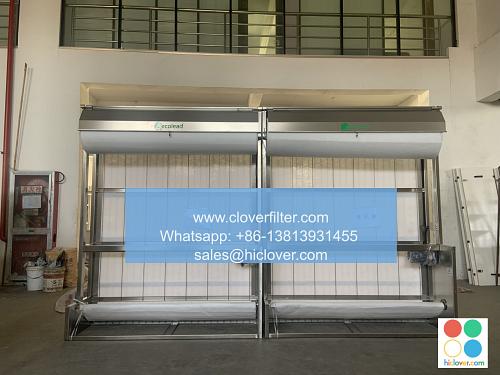The Pros and Cons of Using an Activated Carbon Air Filter for Your Office

As concern about indoor air quality and air pollution continues to grow, many offices are turning to activated carbon air filters as a solution to improve the air quality and create a healthier working environment. In this article, we will explore the pros and cons of using an activated carbon air filter for your office, highlighting various application areas and discussing the benefits and drawbacks of these systems.
What is an Activated Carbon Air Filter?
An activated carbon air filter is a type of air purification system that uses activated carbon to capture and remove airborne pollutants, such as volatile organic compounds (VOCs), gases, and odors. Activated carbon is a highly porous material that is designed to trap pollutants and prevent them from circulating in the air.
Pros of Using an Activated Carbon Air Filter
There are several advantages to using an activated carbon air filter in your office, including:
* Improved indoor air quality: By removing airborne pollutants and odors, an activated carbon air filter can significantly improve the indoor air quality in your office, creating a healthier and more comfortable working environment.
* Reduced allergy and asthma symptoms: By removing allergens and irritants from the air, an activated carbon air filter can help reduce allergy and asthma symptoms in employees.
* Elimination of odors: Activated carbon air filters are highly effective at removing unpleasant odors and smells from the air, creating a more pleasant working environment.
* Low maintenance: Activated carbon air filters are relatively low maintenance, as they do not require frequent replacement or cleaning.
Cons of Using an Activated Carbon Air Filter
While activated carbon air filters have several advantages, there are also some disadvantages to consider, including:
* High upfront cost: Activated carbon air filters can be more expensive to purchase than other types of air purification systems.
* Limited effectiveness against certain pollutants: Activated carbon air filters may not be effective against certain types of pollutants, such as particulate matter or microorganisms.
* Replacement costs: While activated carbon air filters are relatively low maintenance, they do require periodic replacement, which can be costly.
* Potential for re-entrainment of pollutants: If the activated carbon air filter is not properly maintained or replaced, pollutants can become re-entrained into the air, reducing the effectiveness of the system.
Application Areas for Activated Carbon Air Filters
Activated carbon air filters can be used in a variety of application areas, including:
* Office buildings: Activated carbon air filters can be used to improve indoor air quality and reduce allergy and asthma symptoms in office buildings.
* Industrial facilities: Activated carbon air filters can be used to remove hazardous chemicals and gases from the air in industrial facilities.
* Healthcare facilities: Activated carbon air filters can be used to remove infectious agents and odors from the air in healthcare facilities.
* Residential homes: Activated carbon air filters can be used to improve indoor air quality and reduce allergy and asthma symptoms in residential homes.
In conclusion, activated carbon air filters can be an effective solution for improving indoor air quality and reducing allergy and asthma symptoms in offices and other application areas. However, it is essential to consider the pros and cons of these systems and to properly maintain and replace them to ensure their effectiveness. You haven’t asked a question or provided any context. What would you like to talk about or ask? I’ll do my best to provide a helpful and informative response.

